As Canada faces longer, more intense wildfire seasons, forestry scientists meeting the Canadian Institute of Forestry’s 117th annual conference this week say the country’s forests are drying out faster than ever, and that could transform how we manage them in the decades to come. …Among the most urgent topics is how heat and drought are changing forest moisture and fuel levels, the materials that feed wildfires. “Modest increases in temperature result in very significant reductions in fuel moisture, which makes those fuels, these trees, these shrubs, these downed trees, this dead wood, all of it that much more flammable,” said Patrick James, associate professor at the University of Toronto researching forest disturbances and wildfires. …He took part in a panel which examined how shifting weather patterns could both challenge and, in some rare cases, benefit certain ecosystems.



 FORT MILL, South Carolina — In a major stride towards its ambitious 2030 sustainability strategy, Domtar released its sustainability report. The report, entitled
FORT MILL, South Carolina — In a major stride towards its ambitious 2030 sustainability strategy, Domtar released its sustainability report. The report, entitled  In this newsletter you’ll find:
In this newsletter you’ll find:



 Anderson Creek Timber is currently hauling logs from its property located just south of Nelson above the Rail Trail at Mountain Station. The work will continue for another three-to-four weeks, said Doug Thorburn, a forester with Monticola Forest Ltd. that manages Anderson Creek’s forest properties. … The 600-hectare Anderson Creek Timber property is private land and is therefore governed by B.C.’s Private Managed Forest Land Act, which provides much less regulation than the Forest Act in areas such as biodiversity, watershed protection, wildlife protection and harvest guidelines. …Anderson Creek Timber and Kalesnikoff, which has a public Crown land tenure over much of the Anderson Creek watershed, are working on a watershed assessment for the area… The reason the company has not done public information sessions about its logging plans … is that on privately owned land, compared with public land, there is less obligation to do so.
Anderson Creek Timber is currently hauling logs from its property located just south of Nelson above the Rail Trail at Mountain Station. The work will continue for another three-to-four weeks, said Doug Thorburn, a forester with Monticola Forest Ltd. that manages Anderson Creek’s forest properties. … The 600-hectare Anderson Creek Timber property is private land and is therefore governed by B.C.’s Private Managed Forest Land Act, which provides much less regulation than the Forest Act in areas such as biodiversity, watershed protection, wildlife protection and harvest guidelines. …Anderson Creek Timber and Kalesnikoff, which has a public Crown land tenure over much of the Anderson Creek watershed, are working on a watershed assessment for the area… The reason the company has not done public information sessions about its logging plans … is that on privately owned land, compared with public land, there is less obligation to do so.
 The Forest Enhancement Society of BC (FESBC) is accepting expressions of interest (EOI) for projects to assist the Province of British Columbia in advancing the environmental and resource stewardship of British Columbia’s forests. These projects must occur on provincial crown land and support one or more of the core purposes of the Society, which include:
The Forest Enhancement Society of BC (FESBC) is accepting expressions of interest (EOI) for projects to assist the Province of British Columbia in advancing the environmental and resource stewardship of British Columbia’s forests. These projects must occur on provincial crown land and support one or more of the core purposes of the Society, which include: ʼNa̱mǥis First Nation and the Province are one step closer to a joint decision-making agreement that will support predictable harvesting, job creation and sustainable forestry operations on the north Island. “The best way to move fibre is by working together and that is what we are accomplishing with the ʼNa̱mǥis First Nation,” said Ravi Parmar, Minister of Forests. “I am optimistic that this draft agreement will create good-paying jobs and help us in our efforts to provide stability and certainty for our coastal forestry sector, as we deal with Donald Trump’s attack on our forestry sector.” ʼNa̱mǥis First Nation and the Province have developed a first-of-its-kind draft Section 7 joint decision-making agreement for the forestry sector under the Declaration on the Rights of Indigenous Peoples Act (Declaration Act) and Forest Range and Practices Act.
ʼNa̱mǥis First Nation and the Province are one step closer to a joint decision-making agreement that will support predictable harvesting, job creation and sustainable forestry operations on the north Island. “The best way to move fibre is by working together and that is what we are accomplishing with the ʼNa̱mǥis First Nation,” said Ravi Parmar, Minister of Forests. “I am optimistic that this draft agreement will create good-paying jobs and help us in our efforts to provide stability and certainty for our coastal forestry sector, as we deal with Donald Trump’s attack on our forestry sector.” ʼNa̱mǥis First Nation and the Province have developed a first-of-its-kind draft Section 7 joint decision-making agreement for the forestry sector under the Declaration on the Rights of Indigenous Peoples Act (Declaration Act) and Forest Range and Practices Act. 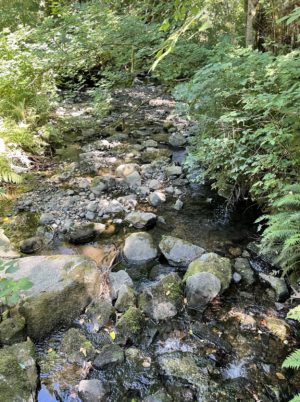 The Chemainus River reveals its secrets in strange and unexpected ways. For years, I have wandered the forests near my North Cowichan home in search of the last few ancient trees, finding a few nice specimens here and there. In the heavily logged, 5,000-hectare Municipal Forest Reserve — popularly known as the Six Mountains, an hour north of Victoria — they are as elusive as the last rhinos of Sumatra. With a bit of luck, I hope my persistence may yet pay off. I don’t know it at the time, but my quest will launch me on a journey from the river’s headwaters to its mouth in pursuit of questions fundamental to the Chemainus and its future. How have human activities like industrial logging shaped the river, its watershed, and its salmon? …In my search for answers, I will discover modern challenges that bedevil other B.C. coastal rivers.
The Chemainus River reveals its secrets in strange and unexpected ways. For years, I have wandered the forests near my North Cowichan home in search of the last few ancient trees, finding a few nice specimens here and there. In the heavily logged, 5,000-hectare Municipal Forest Reserve — popularly known as the Six Mountains, an hour north of Victoria — they are as elusive as the last rhinos of Sumatra. With a bit of luck, I hope my persistence may yet pay off. I don’t know it at the time, but my quest will launch me on a journey from the river’s headwaters to its mouth in pursuit of questions fundamental to the Chemainus and its future. How have human activities like industrial logging shaped the river, its watershed, and its salmon? …In my search for answers, I will discover modern challenges that bedevil other B.C. coastal rivers.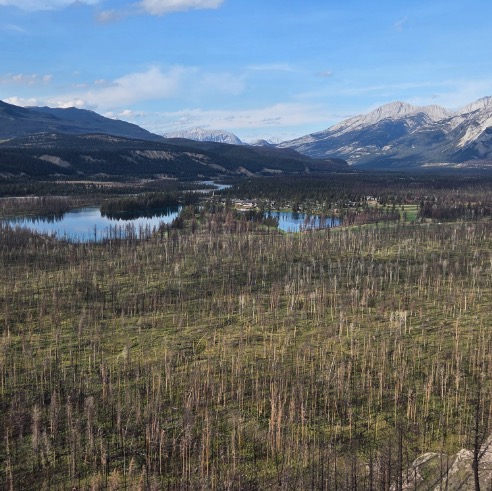

 …the carcasses of 11 cattle were found on a logging road near Quesnel earlier this week… The owner of the animals, who holds tenure for an area of Crown land in B.C.’s Cariboo region, discovered the cows had ingested a nitrate-based fertilizer used in forestry to encourage tree growth, said Kevin Boon, of the B.C. Cattlemen’s Association. “They licked it, thinking it was salt, and died of nitrate poisoning,” he said. …Boon said the rancher … fears more may have been poisoned… The fertilizer is usually applied in the winter or early spring, while cows aren’t grazing in B.C.’s forests. It appears to have been done earlier this year, due to a “lack of understanding,” said Boon, emphasizing that it doesn’t appear to be deliberate. “When you have multiple tenure-holders on the land, there needs to be communication with the stakeholders,” he said. …B.C. Forests Ministry is aware of the situation and is investigating…
…the carcasses of 11 cattle were found on a logging road near Quesnel earlier this week… The owner of the animals, who holds tenure for an area of Crown land in B.C.’s Cariboo region, discovered the cows had ingested a nitrate-based fertilizer used in forestry to encourage tree growth, said Kevin Boon, of the B.C. Cattlemen’s Association. “They licked it, thinking it was salt, and died of nitrate poisoning,” he said. …Boon said the rancher … fears more may have been poisoned… The fertilizer is usually applied in the winter or early spring, while cows aren’t grazing in B.C.’s forests. It appears to have been done earlier this year, due to a “lack of understanding,” said Boon, emphasizing that it doesn’t appear to be deliberate. “When you have multiple tenure-holders on the land, there needs to be communication with the stakeholders,” he said. …B.C. Forests Ministry is aware of the situation and is investigating… Look for these stories and more in the Woodlots BC News:
Look for these stories and more in the Woodlots BC News: Don’t miss the September BCCFA newsletter with these headlines and more:
Don’t miss the September BCCFA newsletter with these headlines and more: Date: Wednesday, October 8, 2025 | Doors: 6 pm | Event: 7 pm | Reception: 8:30 pm | Location: Hollywood Theatre, 3123 W. Broadway, Vancouver
Date: Wednesday, October 8, 2025 | Doors: 6 pm | Event: 7 pm | Reception: 8:30 pm | Location: Hollywood Theatre, 3123 W. Broadway, Vancouver


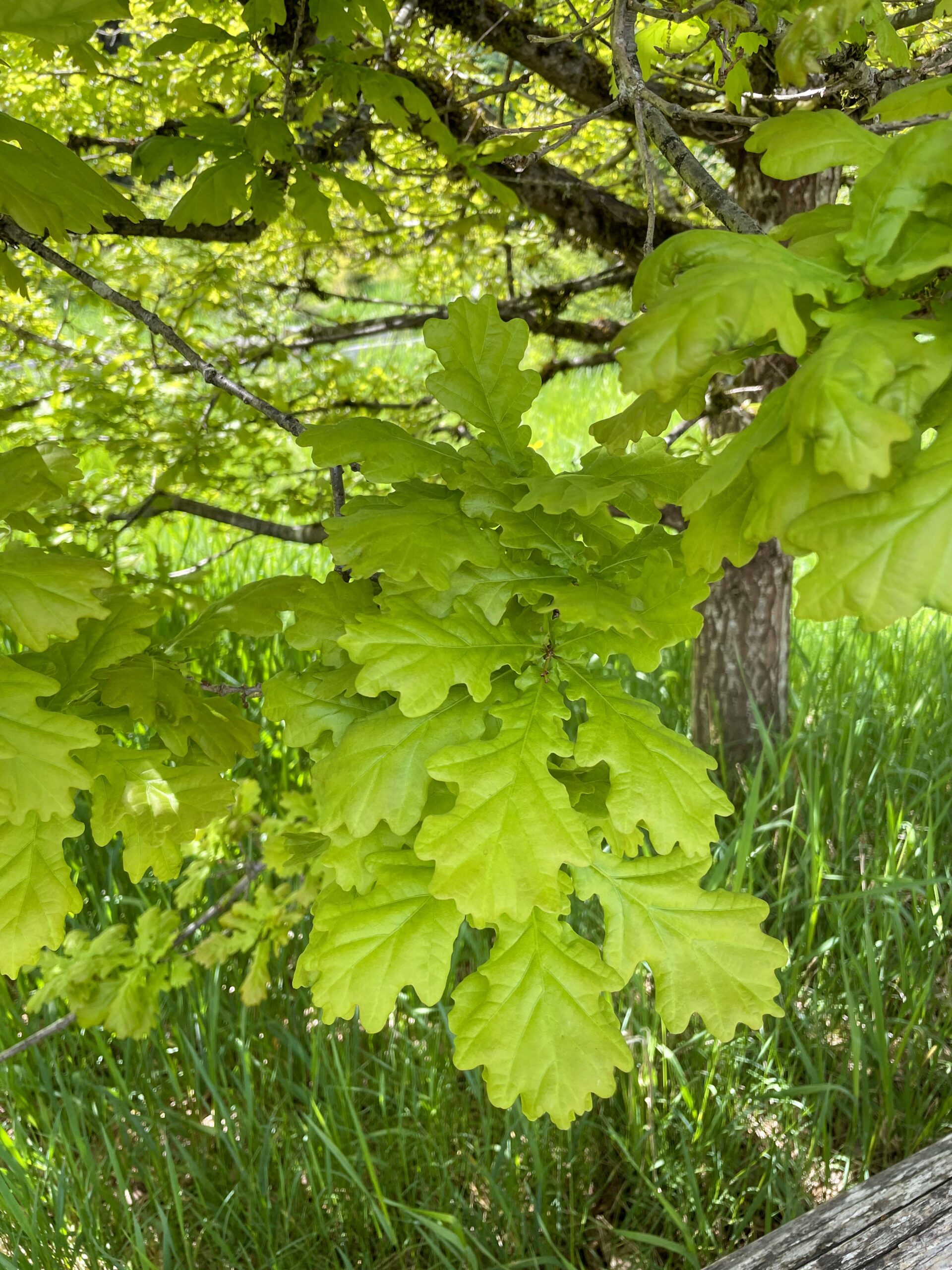 A group of University of Toronto forestry students collected acorns from a giant White Oak tree at Queen’s Park on Wednesday as part of an effort to preserve the diversity of Toronto’s native trees. Eric Davies, a forest ecologist at the University of Toronto, led a group of undergraduate students in the university’s foresters club as they gathered about six litres of acorns from a tree in Queen’s Park North, one of four remaining large White Oaks in the park. White Oaks, a common deciduous tree species in North America, are the largest and oldest trees in the green spaces outside the Ontario Legislature. …Davies said timing is key, as White Oaks produce acorns about once every five to 10 years — this year being one of them. …Davies said the students will donate most of the acorns to the City of Toronto’s tree seed diversity program in the next two weeks. Some of the acorns will be kept at U of T to be grown there, he added.
A group of University of Toronto forestry students collected acorns from a giant White Oak tree at Queen’s Park on Wednesday as part of an effort to preserve the diversity of Toronto’s native trees. Eric Davies, a forest ecologist at the University of Toronto, led a group of undergraduate students in the university’s foresters club as they gathered about six litres of acorns from a tree in Queen’s Park North, one of four remaining large White Oaks in the park. White Oaks, a common deciduous tree species in North America, are the largest and oldest trees in the green spaces outside the Ontario Legislature. …Davies said timing is key, as White Oaks produce acorns about once every five to 10 years — this year being one of them. …Davies said the students will donate most of the acorns to the City of Toronto’s tree seed diversity program in the next two weeks. Some of the acorns will be kept at U of T to be grown there, he added.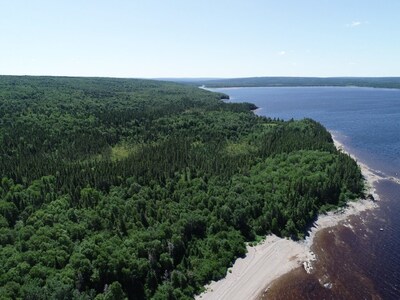
 ATLANTA — Forest Stewardship Council US announced the approval of the revised
ATLANTA — Forest Stewardship Council US announced the approval of the revised 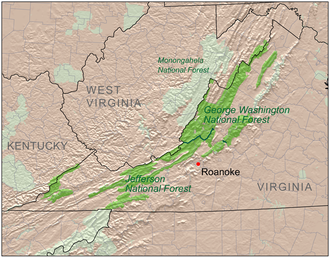
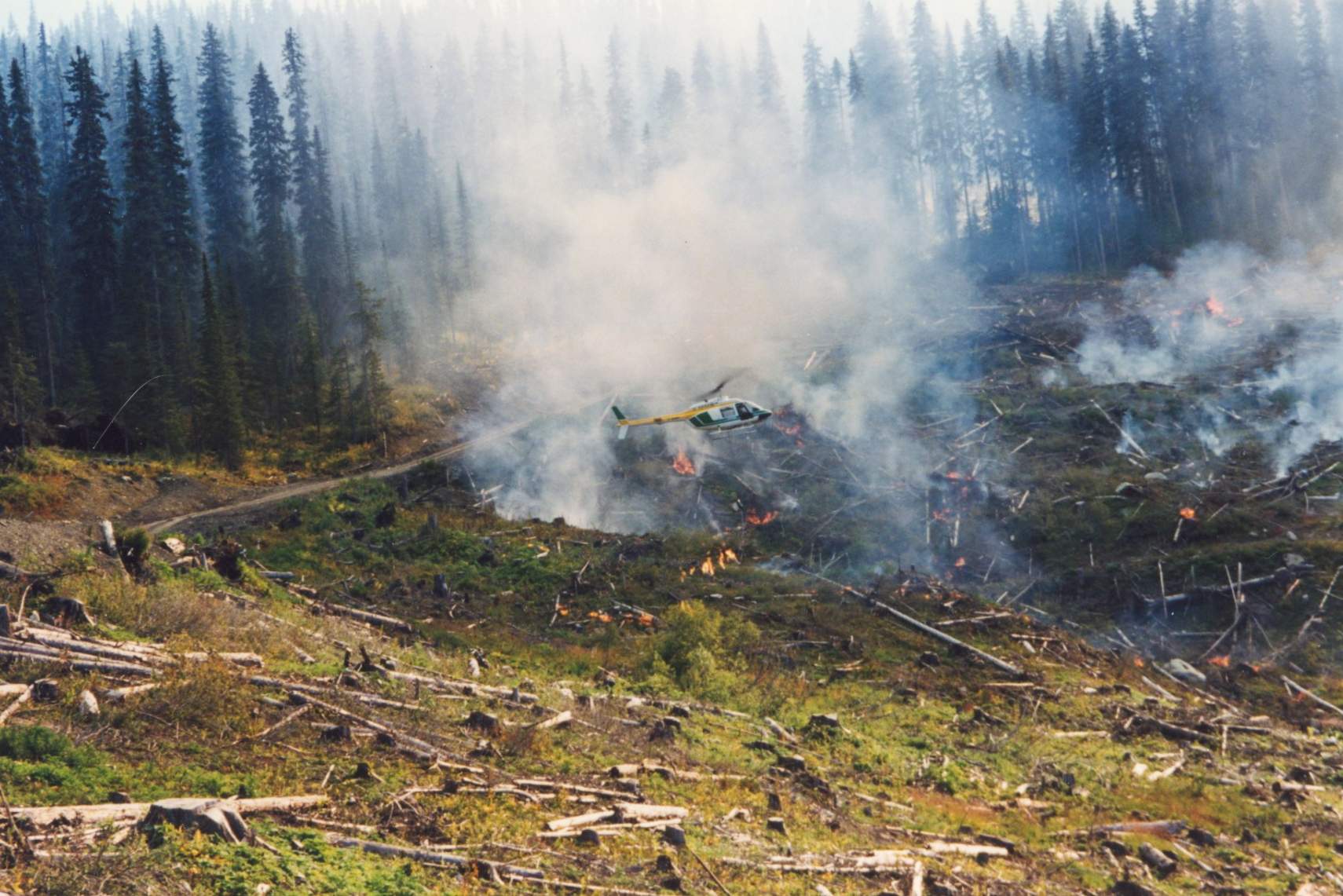 Despite the Trump administration’s pledge to aggressively clear overgrowth from national forests, the U.S. Forest Service is falling significantly short on wildfire mitigation work. By mid-September, the agency had only treated about 2.2 million acres through thinning and prescribed burns. That’s far short of the over 4 million acres treated during the last year of the Biden administration, and it’s also behind the agency’s annual average over the past decade. Forest Service Chief Tom Schultz blamed “operational challenges” and said agency resources were diverted to help battle blazes in Canada. However, Senator Ron Wyden of Oregon is blaming the slowdown in fuel treatments on the Trump administration firing thousands of Forest Service employees earlier this year. …the government shutdown has stopped wildfire prevention efforts across the country’s entire 193 million acres of national forest land [at] the ideal time for the agency to conduct safe prescribed burns across the West.
Despite the Trump administration’s pledge to aggressively clear overgrowth from national forests, the U.S. Forest Service is falling significantly short on wildfire mitigation work. By mid-September, the agency had only treated about 2.2 million acres through thinning and prescribed burns. That’s far short of the over 4 million acres treated during the last year of the Biden administration, and it’s also behind the agency’s annual average over the past decade. Forest Service Chief Tom Schultz blamed “operational challenges” and said agency resources were diverted to help battle blazes in Canada. However, Senator Ron Wyden of Oregon is blaming the slowdown in fuel treatments on the Trump administration firing thousands of Forest Service employees earlier this year. …the government shutdown has stopped wildfire prevention efforts across the country’s entire 193 million acres of national forest land [at] the ideal time for the agency to conduct safe prescribed burns across the West.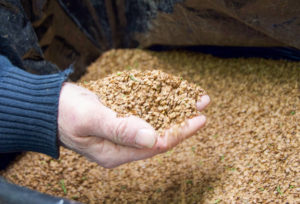 Roughly 500 years ago in California’s High Sierra, pine cones dropped to the ground and a cycle began. …Half a millennia later, US Forest Service scientists began testing strategies to save these now ancient and massive trees in the little-known area east of Fresno called the Teakettle Experimental Forest. They had plans to light a huge prescribed burn to clear overgrowth next year. But then the Garnet Fire ignited and scorched all 3,000 federally protected acres on its path through the Sierra National Forest. …Scott Scherbinski, a biologist at the Climate & Wildfire Institute, said “It will be a start-over event for this forest.” …Malcolm North, a Forest Service ecologist said…fires with less intensity can be beneficial in California’s fire-adapted landscapes, but the Garnet Fire, when it burned through in September, may have killed most trees and sterilized the ground — making it unlikely the forest can rebound without intervention. [to access the full story a San Francisco Chronicle subscription is required]
Roughly 500 years ago in California’s High Sierra, pine cones dropped to the ground and a cycle began. …Half a millennia later, US Forest Service scientists began testing strategies to save these now ancient and massive trees in the little-known area east of Fresno called the Teakettle Experimental Forest. They had plans to light a huge prescribed burn to clear overgrowth next year. But then the Garnet Fire ignited and scorched all 3,000 federally protected acres on its path through the Sierra National Forest. …Scott Scherbinski, a biologist at the Climate & Wildfire Institute, said “It will be a start-over event for this forest.” …Malcolm North, a Forest Service ecologist said…fires with less intensity can be beneficial in California’s fire-adapted landscapes, but the Garnet Fire, when it burned through in September, may have killed most trees and sterilized the ground — making it unlikely the forest can rebound without intervention. [to access the full story a San Francisco Chronicle subscription is required]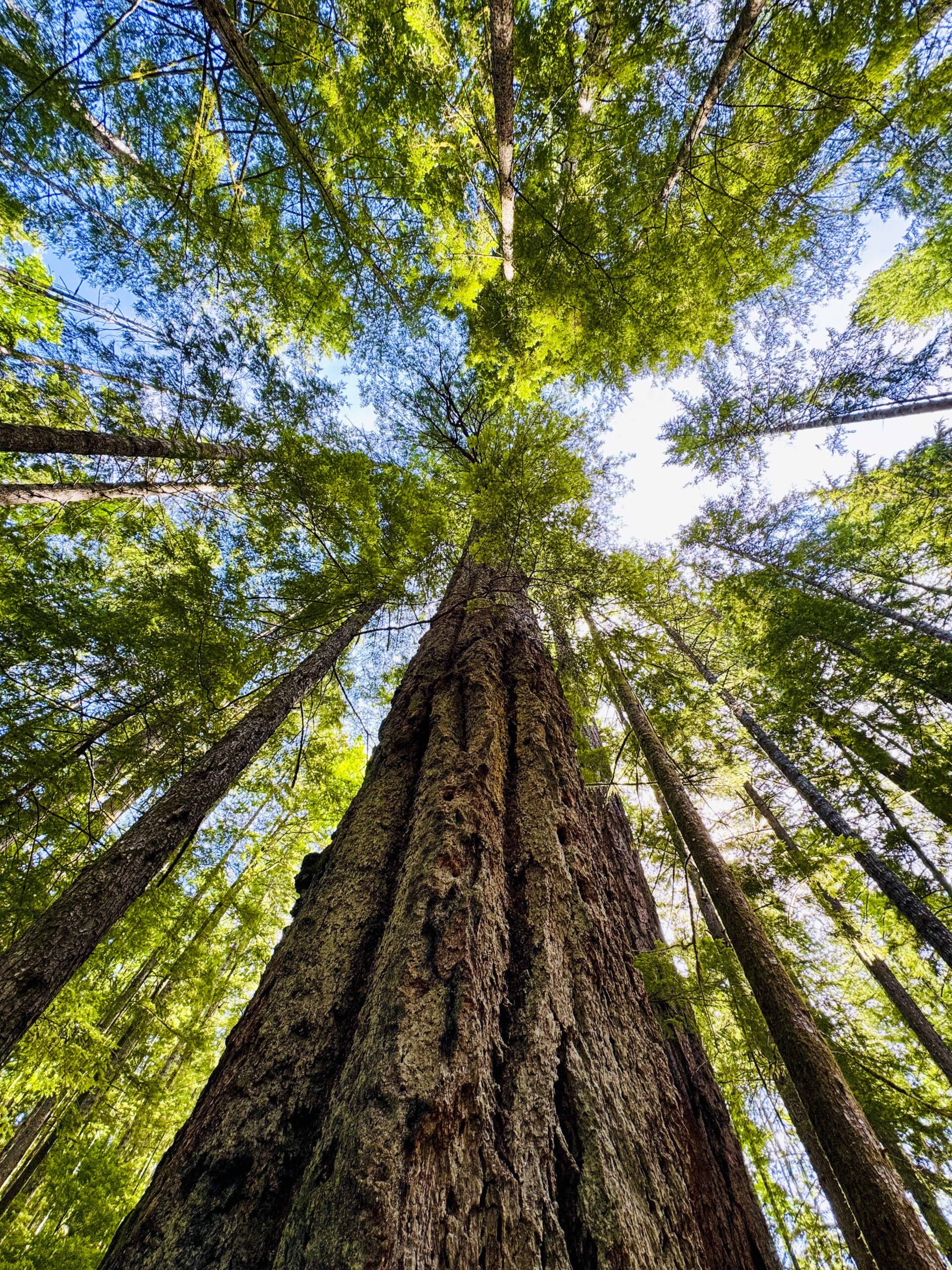 Drought and insects have killed an unprecedented number of Oregon’s Douglas fir trees during the last decade, costing billions in timber value, damaging infrastructure and ramping up wildfire danger. Beginning in 2015 and accelerating with the 2021 heat dome, roughly 635,000 acres of forest have been impacted by what’s known as Douglas fir “dieback” in southwest Oregon and the Willamette Valley. “It’s hitting trees of all sizes, but it’s hitting larger and older trees the hardest,” Max Bennett, a retired forest researcher with Oregon State University, told members of the Oregon Legislature on Sept. 30. “What we’re seeing now is unprecedented.” The dieback has led to $1.1 billion in lost timber value, $500 million in potential road hazard costs and created a tinderbox of forest fuel capable of spawning the West’s most destructive wildfires, a group of foresters and researchers told the House Committee on Agriculture, Land Use, Natural Resources and Water.
Drought and insects have killed an unprecedented number of Oregon’s Douglas fir trees during the last decade, costing billions in timber value, damaging infrastructure and ramping up wildfire danger. Beginning in 2015 and accelerating with the 2021 heat dome, roughly 635,000 acres of forest have been impacted by what’s known as Douglas fir “dieback” in southwest Oregon and the Willamette Valley. “It’s hitting trees of all sizes, but it’s hitting larger and older trees the hardest,” Max Bennett, a retired forest researcher with Oregon State University, told members of the Oregon Legislature on Sept. 30. “What we’re seeing now is unprecedented.” The dieback has led to $1.1 billion in lost timber value, $500 million in potential road hazard costs and created a tinderbox of forest fuel capable of spawning the West’s most destructive wildfires, a group of foresters and researchers told the House Committee on Agriculture, Land Use, Natural Resources and Water.
 Last April, a pair of teenage boys … set fire to wooden pallets someone had dumped in the woods. Within a few hours it became one of the fastest-moving and most destructive wildfires on record in the New Jersey Pinelands. By the time it was brought under control three weeks later, about 15,000 acres of preserved forest were destroyed, and thousands of people were forced to flee their homes and businesses. Most official accounts of what became known as the Jones Road Fire attribute its ferocious power to the intensifying cycles of drought and heat linked to climate change that continue to affect coastal areas. But forestry experts in New Jersey point to another cause. …On Sept. 18, the New Jersey Pinelands Commission took a big step toward more aggressive management of the state’s Pinelands National Preserve voting to thin out a 12,000-acre stretch of pine and oak woodland adjacent to the wildfire site.
Last April, a pair of teenage boys … set fire to wooden pallets someone had dumped in the woods. Within a few hours it became one of the fastest-moving and most destructive wildfires on record in the New Jersey Pinelands. By the time it was brought under control three weeks later, about 15,000 acres of preserved forest were destroyed, and thousands of people were forced to flee their homes and businesses. Most official accounts of what became known as the Jones Road Fire attribute its ferocious power to the intensifying cycles of drought and heat linked to climate change that continue to affect coastal areas. But forestry experts in New Jersey point to another cause. …On Sept. 18, the New Jersey Pinelands Commission took a big step toward more aggressive management of the state’s Pinelands National Preserve voting to thin out a 12,000-acre stretch of pine and oak woodland adjacent to the wildfire site.

 MONTANA — With the federal government in a shutdown, the Forest Service has paused much of the wildfire preparation and prevention work it does on its 193 million acres of national forest. A Forest Service contingency plan, current as of Sept. 30, calls for continued wildfire response. But the work necessary to reduce the fuels for massive wildfires, including prescribed burns, is on hold. …“We were told, ‘No ignitions,’” said a Forest Service fire management officer, who didn’t want to be named for fear of losing his job. “‘Don’t even start.’” The cooler, wetter fall season is an ideal time for prescribed burns and pile burning across the West. …Other significant activities will be delayed during the shutdown, including statewide forest inventories, processing special use permits and reimbursing partners like the states and non-governmental organizations that do forest management work with federal funds.
MONTANA — With the federal government in a shutdown, the Forest Service has paused much of the wildfire preparation and prevention work it does on its 193 million acres of national forest. A Forest Service contingency plan, current as of Sept. 30, calls for continued wildfire response. But the work necessary to reduce the fuels for massive wildfires, including prescribed burns, is on hold. …“We were told, ‘No ignitions,’” said a Forest Service fire management officer, who didn’t want to be named for fear of losing his job. “‘Don’t even start.’” The cooler, wetter fall season is an ideal time for prescribed burns and pile burning across the West. …Other significant activities will be delayed during the shutdown, including statewide forest inventories, processing special use permits and reimbursing partners like the states and non-governmental organizations that do forest management work with federal funds.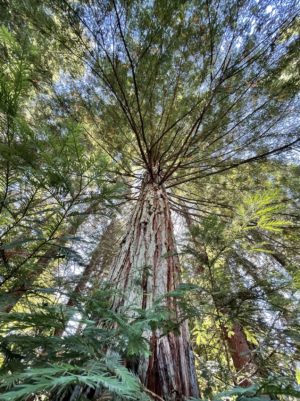 Major agri-food companies including Nestle, Ferrero and Olam Agri have warned that European Union delays to its anti-deforestation law are endangering forests worldwide. The EU last month proposed delaying the launch of its anti-deforestation law for a second time, citing concerns about the readiness of information-technology systems needed to support the law. The delay could postpone the ban on imports of commodities such as palm oil linked to forest destruction for another year. The law faces major opposition from industry and EU trade partners such as the United States and Brazil. EU Commissioner Jessika Roswall said last week the delay was not linked to U.S. concerns about the policy. …Contrary to the EU’s aim of simplifying rules for business, any changes at this stage would introduce uncertainty, annoy shareholders and risk the rules being watered down further, the companies said. The EU deforestation law was due to take effect on December 30.
Major agri-food companies including Nestle, Ferrero and Olam Agri have warned that European Union delays to its anti-deforestation law are endangering forests worldwide. The EU last month proposed delaying the launch of its anti-deforestation law for a second time, citing concerns about the readiness of information-technology systems needed to support the law. The delay could postpone the ban on imports of commodities such as palm oil linked to forest destruction for another year. The law faces major opposition from industry and EU trade partners such as the United States and Brazil. EU Commissioner Jessika Roswall said last week the delay was not linked to U.S. concerns about the policy. …Contrary to the EU’s aim of simplifying rules for business, any changes at this stage would introduce uncertainty, annoy shareholders and risk the rules being watered down further, the companies said. The EU deforestation law was due to take effect on December 30.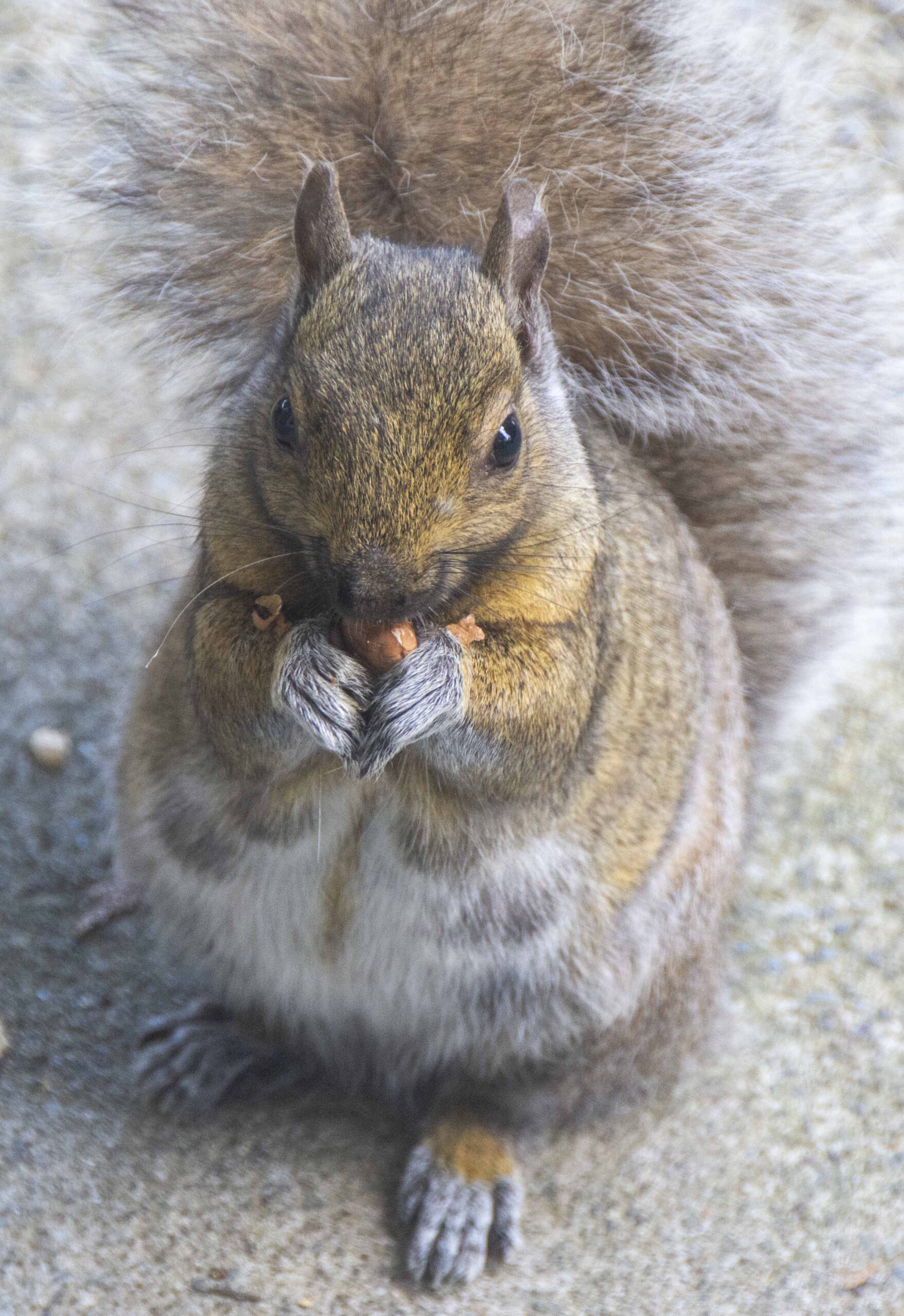 A breakthrough in the creation of an oral contraceptive for wildlife has been made by British researchers – in a significant step towards ethical grey squirrel management. Scientists at the Animal and Plant Health Agency (APHA) have achieved infertility in rats through free feeding of an oral immunocontraceptive, and say initial studies show the formula has also succeeded in attaining a reaction in grey squirrels. Funded by the UK Squirrel Accord (UKSA), the research will develop a vaccine-based contraceptive and species-specific feeder to reduce grey squirrel numbers for the protection of UK red squirrels, trees and woodland ecosystems. …Fertility control is used as a safe and non-lethal option to tackle wildlife problems. …This contraceptive affects an animal’s immune system to prevent it creating the sex hormones and causes infertility in both males and females. Developing a formula that can survive the body’s digestive processes and make it into the bloodstream is a real challenge.
A breakthrough in the creation of an oral contraceptive for wildlife has been made by British researchers – in a significant step towards ethical grey squirrel management. Scientists at the Animal and Plant Health Agency (APHA) have achieved infertility in rats through free feeding of an oral immunocontraceptive, and say initial studies show the formula has also succeeded in attaining a reaction in grey squirrels. Funded by the UK Squirrel Accord (UKSA), the research will develop a vaccine-based contraceptive and species-specific feeder to reduce grey squirrel numbers for the protection of UK red squirrels, trees and woodland ecosystems. …Fertility control is used as a safe and non-lethal option to tackle wildlife problems. …This contraceptive affects an animal’s immune system to prevent it creating the sex hormones and causes infertility in both males and females. Developing a formula that can survive the body’s digestive processes and make it into the bloodstream is a real challenge.